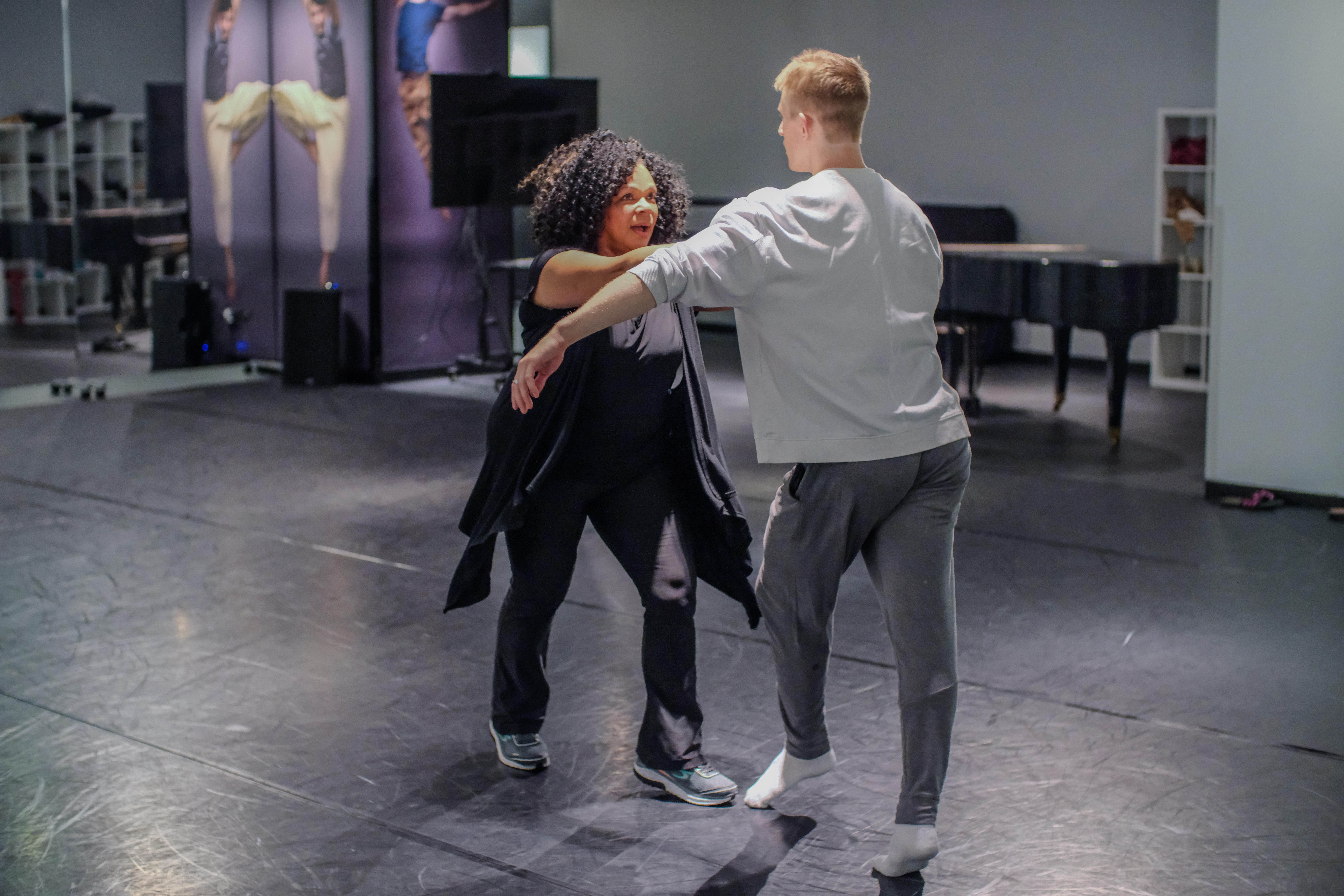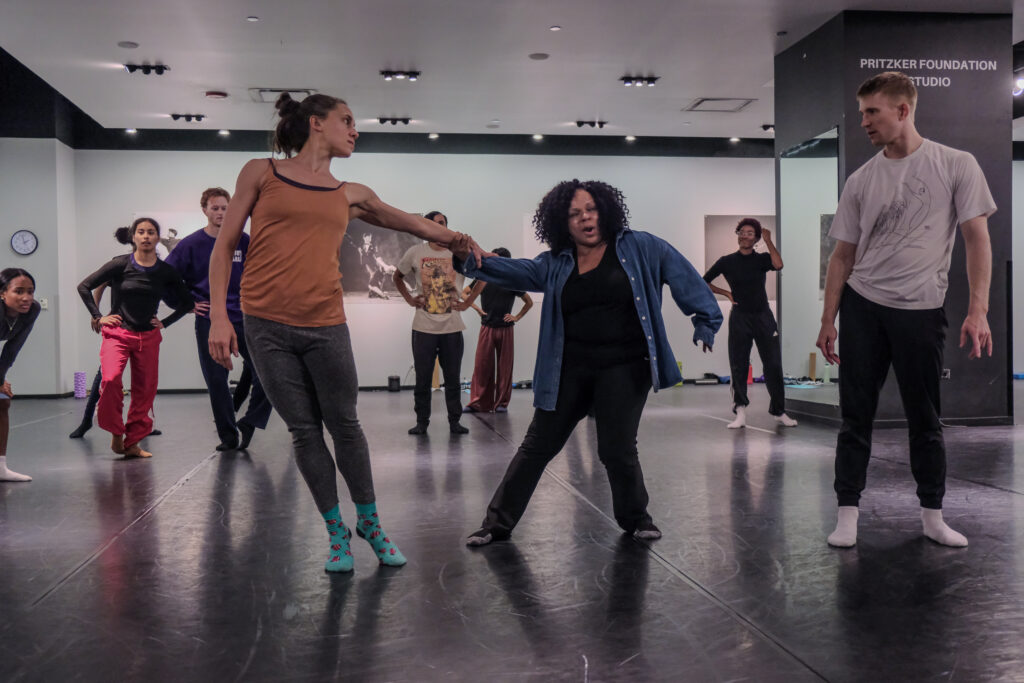
Maria Torres always knew that she would be a dancer, even despite her parents’ urging her to pursue a career path with more stability. When she landed a job performing with one of her mother’s favorite singers, Celia Cruz, Torres says she finally earned her parents’ blessing. But even after that, her mother encouraged her to have a line of work with more security to fall back on.
Torres chose teaching. “I always taught,” she says. “Teaching was always a vocation, or a part of me.”
For a while, she attended school for occupational therapy and did an internship in physical therapy, but she wasn’t finding the same fulfillment she found in performance. In dance, though, there were also challenges.
“While I was a performer, trying to get a major job in the industry, I saw that, unfortunately, I did not fit the MO [modus operandi] that the industry wanted,” she says, recalling instances of being told she didn’t have the right body type, or she didn’t look quite right for a certain part.
“I was always being typed out, but I kept dancing,” she says. “I decided to create my own format, which is Latin jazz.”
Now, Torres is known for this dance genre, which combines technical elements of jazz with Afro-Caribbean styles from Cuba, Puerto Rico, and the Dominican Republic. She’s also widely recognized for her work as both a dancer and a choreographer in a slew of high-profile projects spanning film, TV, and Broadway, including choreographing for “So You Think You Can Dance,” Disney’s Enchanted, Broadway’s Swing and In the Heights, and working with musical artists such as Enrique Iglesias and Don Omar. In addition to teaching Latin jazz at some of the country’s top dance schools, Torres is also an expert on the hustle, a 1970s American partner dance, most recently championing the history of this form through a residency at Lincoln Center.

Overall, Torres’ career mission is deeply tied to her inspiration for developing Latin jazz: to create spaces for dancers who are diverse in all senses of the word. This raison d’être is at the heart of Maria Torres Emerging Artists Foundation, a nonprofit aimed at providing dance mentorship and education to youth from diverse and underserved populations.
“I’ve been an activist my whole life, and I didn’t know it,” Torres says. “When you are constantly met with walls, and you say ‘I still want to be able to do that,’ you try to find ways to express yourself. Dance is my first love—it’s been the way that I’m able to do that. It’s the one thing that allowed people to not see my color or my size, but just to see me through the vocation of dance.”
Through all this, though, Torres never left teaching behind. In addition to educating the next generation of dancers about Latin jazz and the hustle, Torres has also been a Dance Magazine Award honoree.
For her Dance Teacher lesson plan, Torres shares a short Latin jazz warm-up. “I focus very much on the detailing of how the body moves,” says Torres. Below is a sample of several exercises that would make up the beginning of a typical class.
Step by Step
Warm-Up
Latin port de bras:
- To find the correct position for Latin port de bras, make sure you are standing up tall. Then, bend your elbows and pick up your arms so your hands, which are held as though you are about to play a drum, are aligned with your midsection.
- From the Latin port de bras position, begin to sway left to right, focusing on isolating movement in the rib cage area.
- Move your arms in time, keeping them aligned with your belly in your midsection area.
- Now, lift up your left arm, bringing it across your body as you sway to the right. Repeat on the other side and find a natural rhythm. Practice the Latin port de bras in half-time, double-time, and syncopated (quick, quick, slow) rhythms.
Latin tendu:
- Start in a neutral stance, with feet in parallel and arms in the starting place for the Latin port de bras.
- Plié first, then tendu the right leg to the front, staying in parallel. Resume the Latin port de bras.
- Repeat en croix, lifting the hip to the side and turning the hip out to the back.
- Repeat to the left, and then again on both sides.
- To focus more on opposition within the body, eliminate the tendu element, instead alternating between bending the right and left knees while practicing Latin port de bras.
Basic step:
- Maintaining the opposition of the Latin port de bras, step forward with the right foot and then the left.
- Shift the weight back onto your right foot.
- Step back on your left foot, then your right.
- Shift the weight forward on your left foot.
- Repeat steps 1 through 4.
- To level up, try this with a syncopated rhythm.





